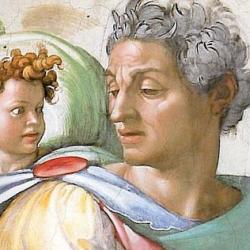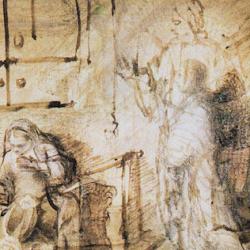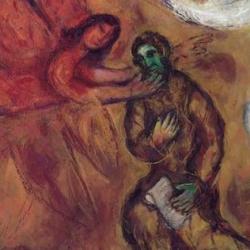Joseph Blenkinsopp ( Isaiah 1-39 (The Anchor Yale Bible Commentaries) ) suggests that the Hebrew canon arranges the prophetic books to correspond to the patriarchal history. After the four former prophets (Joshua, Judges, Samuel, Kings) come four later prophets (Isaiah, Jeremiah, Ezekiel, The Twelve). The three “major” prophetic books, he suggests, numerically mimic the patriarchs Abraham, Isaac, and Jacob, while The Twelve clearly links to the sons of Jacob.
Perhaps we can modify this scheme a bit: If we take Genesis as guide, the three major figures are not Abraham, Isaac, and Jacob, but Abraham, Jacob, and Joseph. Isaac has no separate narrative to himself; there is no toledoth of Abraham. Perhaps we could work out correlations along these lines: Isaiah is an “Abrahamic” prophet, Jeremiah a Jacobean one, and Ezekiel a Josephine one. Then perhaps we can say this: As Abraham erected altars throughout the land and worshiped faithfully, so Isaiah is about righteous worship in the garden; Jeremiah struggles with false prophets/brothers in the city, a Jacobean career; Ezekiel is in Babylon, like Daniel (and Joseph before them) preparing a new Goshen for the 12 to settle. Even with Joseph included in the 3, there are still 12 patriarchs, since Joseph splits into Ephraim and Manasseh.
Then it would be interesting to see if we could work from the birth narratives for the patriarchs in Genesis, through the blessings of Jacob (Genesis 49) and Moses (Deuteronomy 33), and the precious stones for each tribe on the high priest’s breastplate, to the book of the 12. Can we correlate the Book of the 12 with the 12 in any detail?










